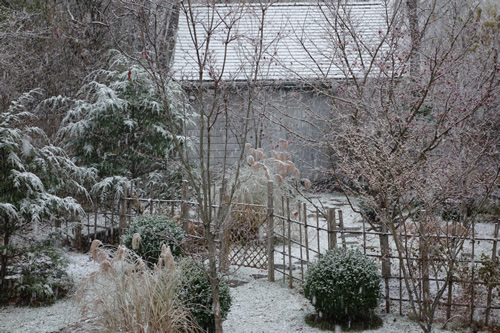
First winter storm
The first winter storm has arrived. The garden has been swept clean of leaves and we’re ready for the long, cold months ahead. The winter garden is very beautiful with just the first dusting of snow. It’s at this time that we see clearly how the evergreens and fence give the garden its structure. By mid-summer they will have faded into the background hidden by lush ferns, grasses, shrubs, and trees.
It’s a small garden and I had endless design possibilities. I could have created a formal English style garden or even modeled the backyard on my favorite Japanese designer Mirei Shigemori’s checkerboard moss garden. But the essence of this garden is contemplative. It should feel as though one were walking on a path to a rustic retreat in the mountains.
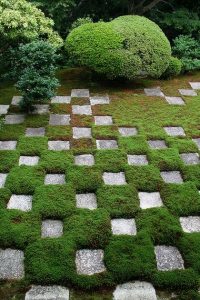
Mirei Shigemori’s moss garden in Japan
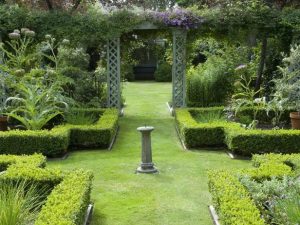
A formal English garden would fit in my backyard but the style would change the entire feeling of the space.
This is a fascinating deconstruction of a tea house. It’s all glass, whereas tea houses of the past were dark, enclosed spaces where you could hardly see. Light and shadow were paramount aspects. But here – all is revealed.
I would love to have tea in this space. Moving through the Roji one is certainly transformed.
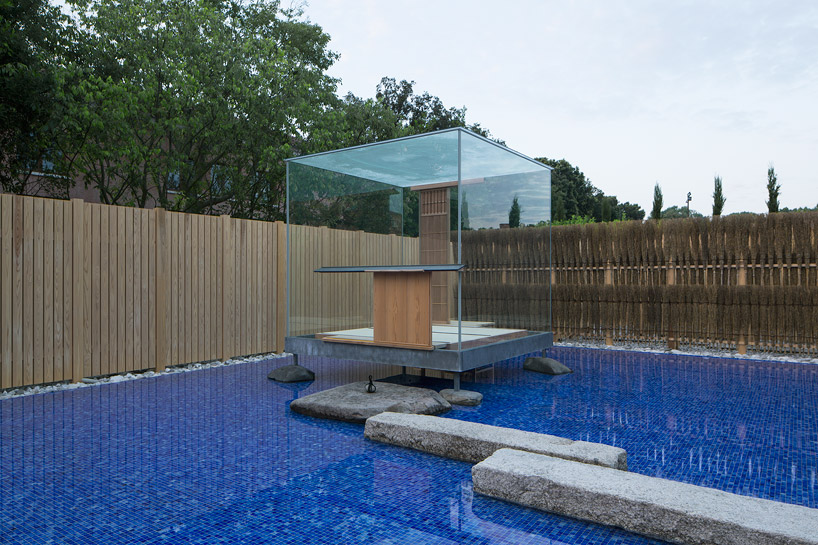
This ‘glass tea house mondrian’ by Japanese artist Hiroshi Sugimoto unites wood, glass and water as a pavilion, holding the traditional Japanese tea ceremony within its transparent wall. Read more about this tea house inspired by Venetian Glass.
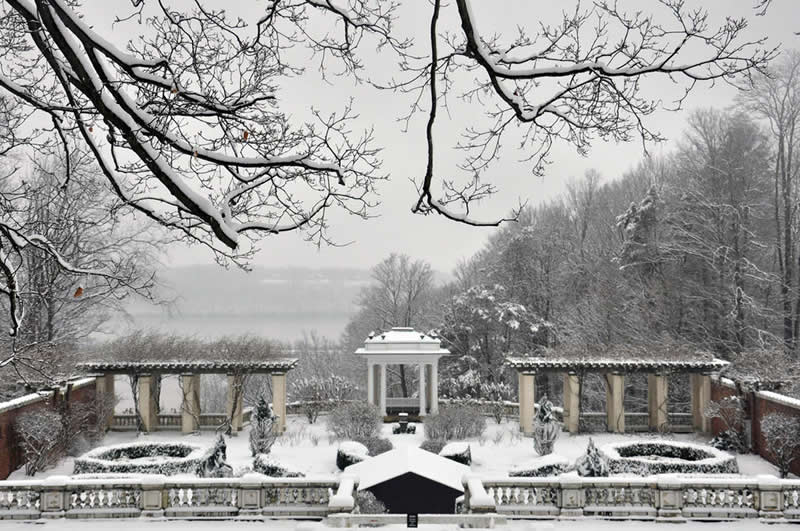
Blithwood is the ultimate romantic, hidden garden on the banks of the Hudson River with views of the Catskill Mountains beyond. The Italianate garden is walled on three sides with a small reflecting pool in the center.
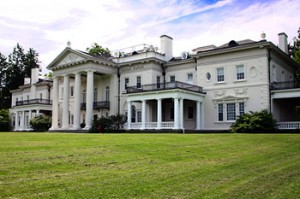 The garden sits below a turn-of-the-century mansion overlooking the Hudson River. The land dates back to a vast track bought from the Indians in 1680. The grounds began their metamorphosis from untamed woods into a carefully landscaped estate in the 1830s, when Robert Donaldson of North Carolina acquired the property and gave it the name Blithewood. He commissioned Andrew Jackson Downing, one of the foremost landscape artists of the day, to design the grounds.
The garden sits below a turn-of-the-century mansion overlooking the Hudson River. The land dates back to a vast track bought from the Indians in 1680. The grounds began their metamorphosis from untamed woods into a carefully landscaped estate in the 1830s, when Robert Donaldson of North Carolina acquired the property and gave it the name Blithewood. He commissioned Andrew Jackson Downing, one of the foremost landscape artists of the day, to design the grounds.
I first came upon this house in the mid 70’s when, like many other estates along the Hudson, it was abandoned. I have an old photo of the main door with OM painted across it.
Since then it’s come into the possession of Bard College which has restored the house and sunken garden below it. Climbing vines, roses, pergola covered with wisteria, boxwood and grasses create a place of tranquil beauty.
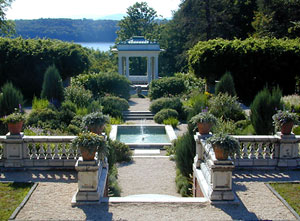
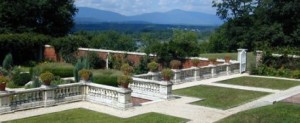
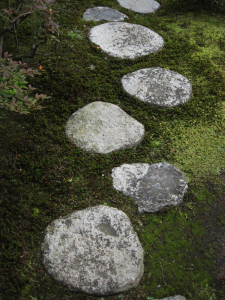 The Tea garden, or Roji is divided into two spaces: an outer garden and an inner garden connected by a series of stone paths. Gates and fences play an important role in dividing the two rooms to create the feeling of transition from one place to another.
The Tea garden, or Roji is divided into two spaces: an outer garden and an inner garden connected by a series of stone paths. Gates and fences play an important role in dividing the two rooms to create the feeling of transition from one place to another.
When designing the landscape for a Tea garden I start by looking at the architecture of the place, the bones and details, because I want to gracefully transition from outer to inner, from the street to the tea house; a transition from daily life to a space that is contemplative and feels connected to place.
It is not necessary to have a tea house or retreat space in your back yard, but the garden should feel like you’ve stepped onto a path that leads you through the countryside to a rustic hut or space designed for quiet contemplation and reflection.
The overall impression should be one of integrity, tranquility and beauty. There are a few elements that make this work.
-excerpt from A Tea Garden in Tivoli
















